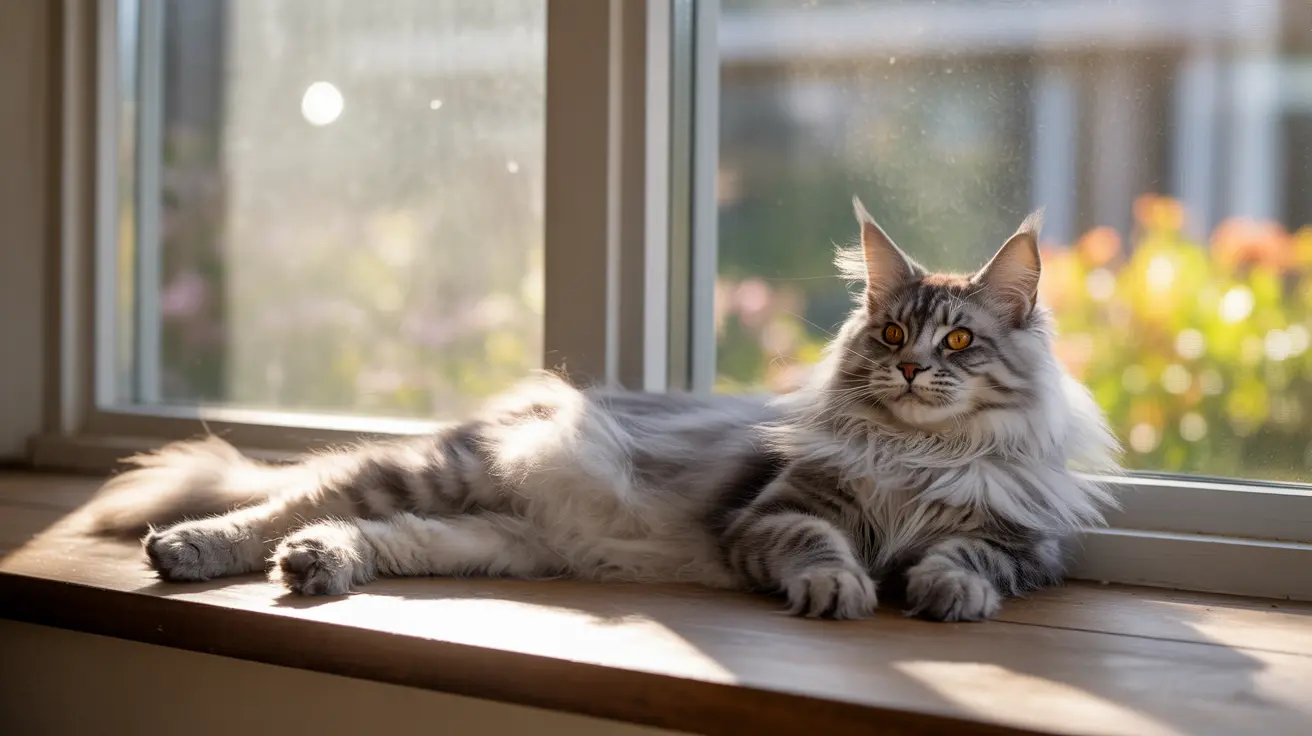Why Do Cats Thump Their Tails?
When your cat thumps their tail, they're trying to tell you something important. This distinctive behavior is one of the most expressive forms of feline body language, serving as a vital communication tool that can convey various emotions and intentions. Understanding these tail signals can significantly improve your relationship with your feline friend and help prevent misunderstandings.
Like a sophisticated morse code, tail thumping can signal anything from contentment to irritation, making it crucial for cat owners to learn how to decode these messages accurately. Let's explore the different meanings behind this fascinating feline behavior and learn how to respond appropriately.
Different Types of Tail Thumping Behaviors
The Friendly Thump
When your cat is lying down and gently thumping their tail while maintaining relaxed body language, they're likely expressing contentment or greeting you. This gentle movement, often accompanied by slow blinks and purring, is your cat's way of saying "hello" or showing affection.
The Warning Thump
A more forceful tail thump against the ground often serves as a warning signal. This behavior typically indicates growing irritation or overstimulation, especially during petting sessions. If you notice this type of thumping, it's best to give your cat some space to prevent escalation into more aggressive behaviors.
Reading Your Cat's Emotional State
Signs of Contentment
A relaxed cat might display gentle tail movements along with:
- Soft, half-closed eyes
- Forward-pointing ears
- Loose, comfortable body posture
- Consistent purring
Signs of Agitation
When tail thumping indicates frustration, watch for:
- Dilated pupils
- Flattened or backward-pointing ears
- Tense body posture
- Low growling or hissing
When to Be Concerned
While most tail thumping is normal communication, sometimes it can indicate underlying health issues. If you notice your cat thumping their tail along with changes in behavior, appetite, or energy levels, consult your veterinarian. This is especially important if the behavior seems unrelated to environmental triggers or appears suddenly in an older cat.
How to Respond to Tail Thumping
The key to responding appropriately to tail thumping is observation and respect. If your cat shows signs of overstimulation during petting, pause and allow them to reset. For positive tail thumping during greetings, feel free to engage with your cat through gentle interaction or play.
Frequently Asked Questions
Why does my cat thump its tail when lying down and how can I tell if it's greeting me or feeling irritated?
If your cat is lying down with relaxed body language, making eye contact, and gently thumping their tail, they're likely greeting you. However, if the thumping becomes forceful and is accompanied by tense body language or flattened ears, they're probably feeling irritated.
What does it mean when a cat's tail thumps forcefully on the floor during petting or playtime?
Forceful tail thumping during petting or play usually indicates overstimulation or irritation. This is your cat's way of saying "enough" or requesting space. It's best to stop petting and give them time to calm down.
How can I recognize if my cat's tail thumping is a sign of pain or discomfort?
Pain-related tail thumping often occurs alongside other symptoms like hiding, decreased appetite, vocalization changes, or reluctance to move. If you notice these signs together with unusual tail thumping, consult your veterinarian.
What are the differences between gentle tail swishing and aggressive tail thumping in cats?
Gentle tail swishing is typically slow and rhythmic, often seen during positive interactions. Aggressive tail thumping is more forceful, rapid, and usually accompanied by other signs of agitation like dilated pupils or flattened ears.
How should I respond when my cat starts thumping its tail to prevent stress or aggression?
When you notice tail thumping, first assess the context and your cat's other body language. If they show signs of irritation, give them space. For positive tail thumping, you can continue gentle interaction while staying attentive to any changes in their body language.
Conclusion
Understanding your cat's tail language is essential for maintaining a harmonious relationship with your feline companion. By paying attention to the context and intensity of tail thumping, along with other body language cues, you can better respond to your cat's needs and prevent potential conflicts. Remember that each cat is unique, so take time to learn your individual pet's specific communication style.






